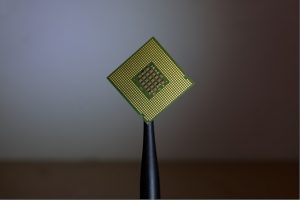Can NFC Tech Help Intel Gain in Mobile Markets?
![]() Inside Secure has signed an agreement with Intel to provide the company with Inside’s NFC products and technologies. Intel will have access to Inside’s software, firmware and core hardware technology for development of future Intel products. Additionally, Inside will provide Intel’s Mobile Wireless Group with access to NFC services based on its MicroRead, SecuRead and Open NFC products.
Inside Secure has signed an agreement with Intel to provide the company with Inside’s NFC products and technologies. Intel will have access to Inside’s software, firmware and core hardware technology for development of future Intel products. Additionally, Inside will provide Intel’s Mobile Wireless Group with access to NFC services based on its MicroRead, SecuRead and Open NFC products.
“We are very excited to have this opportunity to work alongside Intel in the development of scalable NFC solutions for the industry,” said Charles Walton, chief operating officer for INSIDE Secure. “Working with an industry leader like Intel will play a significant role in the mainstream rollout of NFC.”
“NFC is gaining traction in many markets as one of the most convenient ways to use consumer electronic devices for payments and retail commerce transactions, for access to facilities and information, and a host of other applications,” said Aicha Evans, vice-president and general manager of Intel’s Mobile Wireless Group. “We look forward to working with INSIDE to develop and bring to market a range of exciting connectivity solutions for mainstream consumer products that incorporate NFC features.”
Evans’ comments highlight the impending explosion of NFC in mobile devices. It is not surprising that Intel wants its mobile chipsets to include NFC support, as companies push the technology for mobile payments, including Google’s Wallet payment service. Intel needs to launch a competitive smartphone chipset in 2012 with many devices in production if it is to have any chance of overtaking ARM vendors such as Qualcomm, Texas Instruments and Nvidia. Windows 8 should help Intel gain some tablet market share but the real gold is in smartphones, where questions still remain as to whether the broad application support afforded by Intel’s x86 architecture is such a big selling point.
According to Piper Jaffray analyst Gus Richard, Intel is falling behind in the processor market due to their failure to compete in the lucrative mobile device sector. While Intel has continued to concentrate primarily on performance, says Richard, consumer interest has largely shifted to convenience and mobility. As a result, the SoC (System on a Chip) processor has become increasingly important.
“As an example, there is nothing leading edge about Apple’s A5 processor. However, the performance of an iPad is perceived by users as better than a PC,” he said. “This is because the product has a longer battery life, instant on, and a fast internet connection. The A5 processor is not faster than an Intel processor but instead has a large number of IP blocks that execute different functions with lower power and typically more quickly than a general purpose CPU (Intel).”
He also suggested that despite not even manufacturing their own chips, Apple has an advantage over Intel because of the important role software plays in modern chip technology.
There is certainly something to be said for that suggestion. Even between different mobile devices, how the processor is used can be just as important as what it can do.
A message from John Furrier, co-founder of SiliconANGLE:
Your vote of support is important to us and it helps us keep the content FREE.
One click below supports our mission to provide free, deep, and relevant content.
Join our community on YouTube
Join the community that includes more than 15,000 #CubeAlumni experts, including Amazon.com CEO Andy Jassy, Dell Technologies founder and CEO Michael Dell, Intel CEO Pat Gelsinger, and many more luminaries and experts.
THANK YOU





















